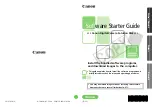
Components
117
# Subnet Import File
#
# Address Mask Range Start Range End
10.0.0.0 255.255.255.0
10.0.1.0 255.255.255.0 10.0.1.1 10.0.1.100
10.0.5.0 255.255.255.0 10.0.5.50 10.0.5.160
10.0.5.0 255.255.255.0 10.0.5.200 10.0.5.210
If the file that you select is correctly formatted and contains valid subnet
information then all subnets listed in the selected file will be added to the
subnets list.
If your file contains any errors, 3Com Network Director will display the
first error it finds, and then reject the whole file: no subnets will be added
to the subnets list. You should correct any errors and re-import the file.
Each subnet can only appear in the subnets list once. If your file contains
any subnets that duplicate subnets already present in the subnets list, the
ranges of the duplicates will be merged.
If your file contains any subnets that overlap with subnets already present
in the subnets list then those subnets will not be imported and a list of
rejected subnets will be displayed. Similarly, if you file contains two or
more subnets that overlap with each other but that do not overlap with
subnets already present in the subnets list then only the first of these
subnets will be imported and the remainder will be rejected.
Monitor Core Devices and Links Pane
The next step of the wizard allows you to configure how devices will be
monitored for stress when the discovery process is complete and the map
has been updated with any new devices.
There are two versions of this dialog, depending upon which options are
selected within the Monitoring tab of the
Tools > Options
dialog box. By
default 3Com Network Director is configured to use an automatic
monitoring mode in which 3Com Network Director itself determines the
most sensible manner in which to monitor the devices in your network.
When 3Com Network Director is operating in this mode the
Monitor
Core Devices and Links
pane is displayed as follows:
Summary of Contents for 3C15500 - Network Director - PC
Page 4: ......
Page 34: ......
Page 38: ...34 ABOUT THIS GUIDE ...
Page 50: ...46 CHAPTER 1 GETTING STARTED ...
Page 64: ...60 CHAPTER 2 PRODUCT ACTIVATION ...
Page 213: ...Components 209 Figure 75 Export to Visio Dialog Box ...
Page 220: ...216 CHAPTER 5 WORKING WITH THE MAP Figure 84 Double Clicking on a Router in the Tree ...
Page 264: ...260 CHAPTER 6 VIEWING DEVICE DETAILS Figure 117 Security Tab for a Device ...
Page 276: ...272 CHAPTER 6 VIEWING DEVICE DETAILS ...
Page 322: ...318 CHAPTER 7 MONITORING THE NETWORK ...
Page 385: ...Examples 381 Figure 189 Attach Alerts Dialog Box ...
Page 406: ...402 CHAPTER 9 PERFORMANCE REPORTING ...
Page 431: ...Components 427 History View dialog box Figure 210 History View Dialog Box ...
Page 440: ...436 CHAPTER 10 RMON Host View dialog box Figure 219 Host View Dialog Box ...
Page 476: ...472 CHAPTER 11 CREATING REPORTS ...
Page 502: ...498 CHAPTER 12 CONFIGURING SINGLE DEVICES ...
Page 526: ...522 CHAPTER 13 VLAN MANAGEMENT Figure 272 Options Dialog Box VLANs Tab ...
Page 567: ...Components 563 Figure 305 Selecting the Link to the End Station on the Map ...
Page 626: ...622 CHAPTER 14 BULK CONFIGURATION ...
Page 684: ...680 CHAPTER 16 UPGRADING DEVICE SOFTWARE ...
Page 814: ...810 CHAPTER 19 BACKING UP DEVICE CONFIGURATIONS ...
Page 838: ...834 CHAPTER 20 LIVE UPDATE ...
Page 894: ...890 APPENDIX G ADDING MAC ADDRESS VENDOR TRANSLATIONS ...















































